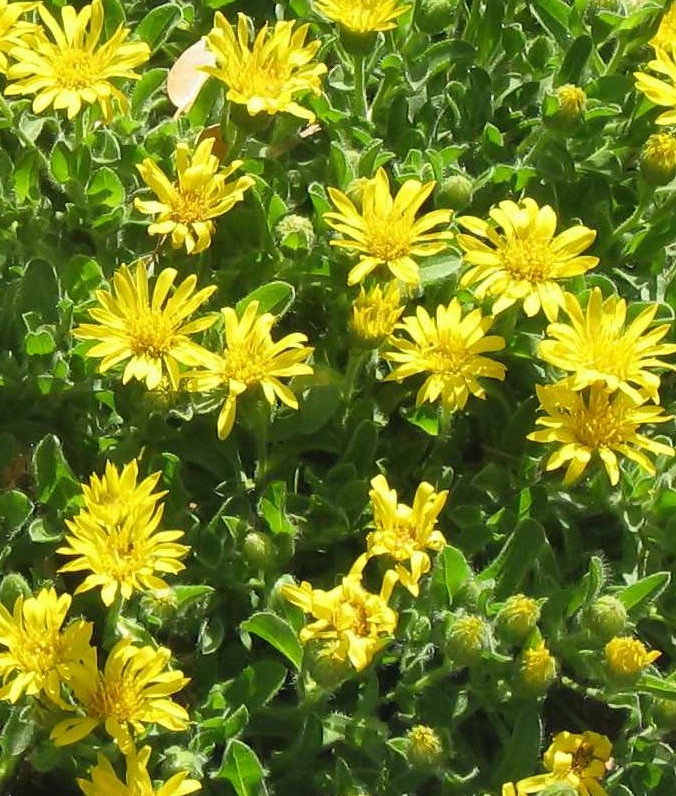 Hairy goldaster, is a herbaceous perennial native to North America from Canada to southern California, east to Texas, Nebraska, and Wisconsin. It grows in open sunny dry sites forming clumps covered from summer to fall with daisy-like flower heads 1-1 1/2” inches across that are attractive to butterflies and bees. The flower heads are borne at the tips of the stems and are composed of golden yellow ray and disc flowers that produce different seeds, a unique characteristic that gave the plant its genus name, Heterotheca (hetero= different, theca=case). The gray-green leaves are narrow, alternate, entire, and one to two inches long. Both the leaves and stems are hairy, hence the specific name villosa. Hairy goldaster is variable and at least nine varieties have been distinguished. It is drought tolerant once established and is an excellent choice for naturalistic plantings. A former genus name, Chrysopsis (chysos=golden, opsis=bearing) refered to the color of the flower heads.
Hairy goldaster, is a herbaceous perennial native to North America from Canada to southern California, east to Texas, Nebraska, and Wisconsin. It grows in open sunny dry sites forming clumps covered from summer to fall with daisy-like flower heads 1-1 1/2” inches across that are attractive to butterflies and bees. The flower heads are borne at the tips of the stems and are composed of golden yellow ray and disc flowers that produce different seeds, a unique characteristic that gave the plant its genus name, Heterotheca (hetero= different, theca=case). The gray-green leaves are narrow, alternate, entire, and one to two inches long. Both the leaves and stems are hairy, hence the specific name villosa. Hairy goldaster is variable and at least nine varieties have been distinguished. It is drought tolerant once established and is an excellent choice for naturalistic plantings. A former genus name, Chrysopsis (chysos=golden, opsis=bearing) refered to the color of the flower heads.
Type: Herbaceous perennial
Bloom: Golden yellow daisy-like flower heads from summer into fall
Size: 1-5’ H x 1- 4’ W
Light: Full sun; tolerates part sun
Soil: Average-lean, sandy, medium moist to dry, well-drained
Hardiness: Zones 5-9
Care: Cut down after blooming
Pests and Diseases: None of significance
Propagation: Seed; division
Companion plants: Ornamental grasses such as fountain grass, goldenrod, Gaillardia, Azure sage
Outstanding Selection: ‘Golden Sunshine’ (3-4′ tall, 2″ wide flowers, later than species).
